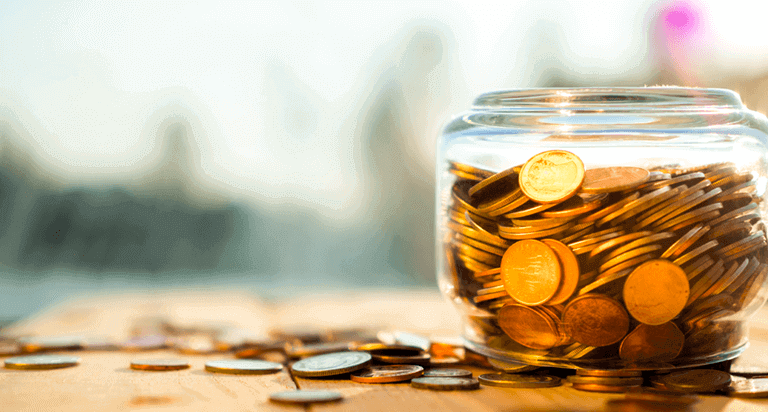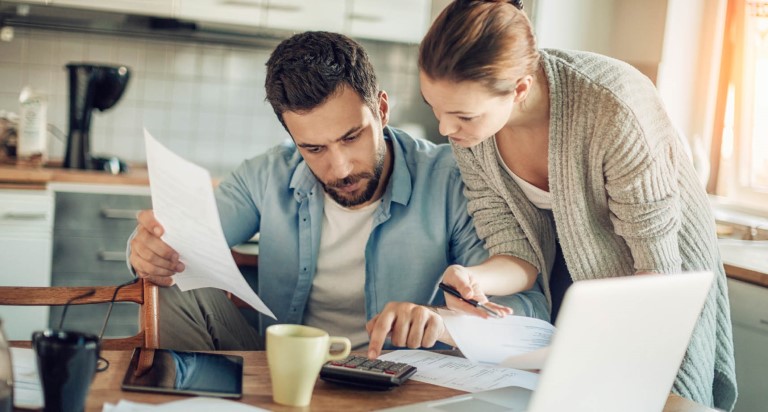How to prepare an emergency fund

Reading time: 5 minutes
An emergency fund is more than a financial safety net; it's peace of mind for whatever could be coming around the corner. The purpose of an emergency fund is to possibly save you from going into debt or taking out a high-cost loan in case of an unplanned and dire financial situation. If the money is already available to you, there's less of a chance you'll need to take on higher interest personal loans or unnecessary credit card debt.
While preparing your emergency savings may seem like an uphill battle, it can be an accessible financial goal if you plan and set realistic milestones for yourself.
What is an emergency fund?
An emergency fund can be many things, including a savings account you set aside for surprise expenses. Common financial difficulties that warrant using your emergency fund can range from job loss to a medical emergency not covered by insurance. If you need to make an unexpected and urgent payment that you can’t budget for, it's considered better to use your emergency fund rather than take out a loan that can carry a high-interest rate, such as a payday loan.
Canadians pay an average of 19.99% interest on credit cards, and according to the Government of Canada, a payday loan can have an annual interest rate of up to 60%. Relying on either to get you out of tough financial situations can create a cycle of debt where you end up using a credit card or payday loan for required emergency payments. An emergency fund could help navigate through unbudgeted finances, instead of taking on debt.
Québec has capped all interest rates at 35% annually, and payday loans are illegal in Québec.
Events that could qualify for utilizing your emergency fund include:
- Loss of job or income
- Medical, dental, or vet emergencies
- Health problems that prevent you from working
- Act of nature that results in property loss
- Unexpected home repairs
- Unexpected car repairs
- Identity theft
- Other large unexpected expenses that haven’t been budgeted for
Life events and large purchases to include in your budget:
- Property tax payments
- A baby
- Wedding/other costly family events
- Investments
- Divorce
- A down payment on a home or car
If you can use your credit card and pay the balance in full at the end of the month, that might be a better option than utilizing your emergency fund. Avoiding high-cost loans such as payday loans or high interest secured or unsecured lines of credit should be a goal in these situations
How much should I save for an emergency fund?
It's recommended that you save three-to-six months of the equivalent of what you spend, or three-to-six months of your income in your emergency fund. While that may seem like a lot of cash to have readily available, the emergency fund size you feel comfortable with should be created over a timeline that’s manageable for you and your current financial situation.
If you’re self-employed or a contractor, it’s recommended you keep at least six months of income available in an emergency fund, as you may not qualify for employment insurance while you’re out of work and in-between jobs. However, how much emergency fund savings you sock away is entirely up to you.
In addition to calculating your current expenses and income, your emergency fund should also reflect your goals and anything you know that’s coming down the pipeline. Events that could impact your emergency fund calculations include:
- A new child
- A new house
- Increase in rent or utilities
Where should I keep an emergency fund?
An emergency fund should be kept in a savings account that’s different from the regular savings account you use for everyday purchases or future, planned expenses. This way, you’re not tempted to look at the amount and potentially use the available cash in your emergency savings on other purchases.
Your emergency fund savings account should also allow you to make withdrawals without penalty and ideally is also earning interest. With a higher yield savings account you're not just putting away money in your emergency fund, but also actively earning interest on it for even smarter saving. Check online to see which banks are offering competitive higher yield accounts and compare them amongst one another to see the best rate available.
Steps to building an emergency fund
The initial step to building an emergency fund is realizing that it’s not going to happen overnight, and you can start as small as you need to.
The second step is to create a monthly budget to see how much money you can afford to put into your emergency fund every month. This can be accomplished by adding up what you spend over the course of a regular month by going through receipts or credit card statements as an emergency fund calculator exercise. Once you know how much you spend compared to your income, you'll be better able to determine how much you're comfortable saving each month.
After you know how much you want to save every month, automate it, so it directly goes into a Tax-Free Savings Account (TFSA) or a High-Interest Savings Account (HISA) as soon as your paycheque hits your chequing account. This way, rather than going through the motions of depositing money into your emergency fund, it’ll be automatically deducted. Plus, if it’s out of sight and out of mind, it could be safer for a rainy day.
Depositing additional money into your emergency savings whenever you can afford to do so could also help take the stress off everyday expenses. For example, when you pay off a student loan or credit card, that money could be redirected towards your emergency fund.
Additional instances where you can add extra money to your emergency fund include a tax refund or a performance bonus at your job.
While saving such a large sum of money for an unpredictable future may seem like a daunting task, an emergency fund is a constructive exercise that could help keep you out of debt down the road.
With Equifax CompleteTM Premier, we monitor your credit report and score to help you spot signs of fraud. And if your identity is stolen, we'll help you recover.



